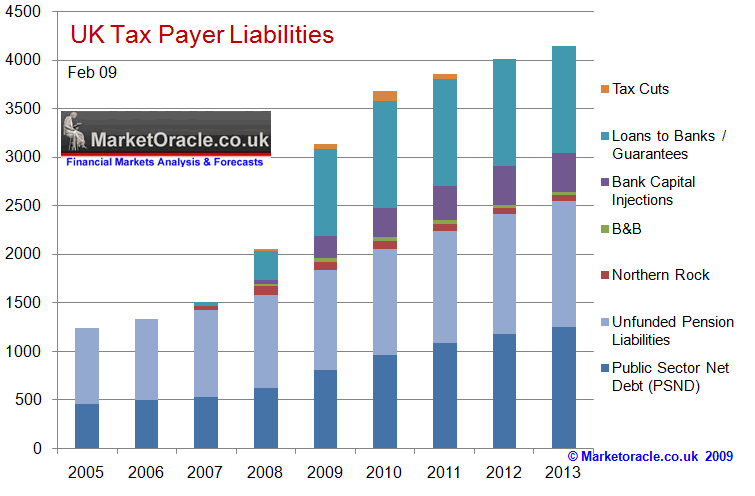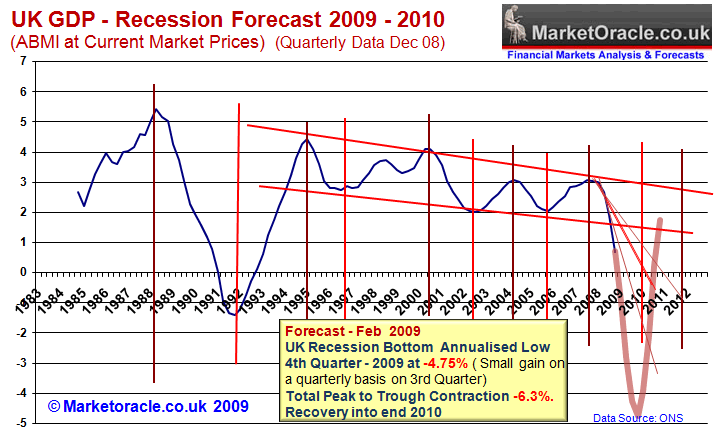Nationwide Buys Up Dunfermline Best Assets, Leaving Toxic Assets for the Tax Payer
Companies / Credit Crisis 2009 Mar 30, 2009 - 05:24 AM GMTBy: Nadeem_Walayat

 The Nationwide building society stepped in to buy the profitable assets of the 140 year old Dunfermline building society, as Scotland's biggest building society effectively went bust under the weight of bad loans primarily made to the commercial and buy to let real estate sectors, with toxic debts estimated at some £1.5 billion now dumped onto the British tax payers.
The Nationwide building society stepped in to buy the profitable assets of the 140 year old Dunfermline building society, as Scotland's biggest building society effectively went bust under the weight of bad loans primarily made to the commercial and buy to let real estate sectors, with toxic debts estimated at some £1.5 billion now dumped onto the British tax payers.
As has been the case right across the financial sector, the Dunfermline's most recent accounts gave NO indications that the society was on the brink of collapse, instead containing liberal amounts of statements that the Society was well capitalised and had a strong balance sheet. The Treasury ruled out nationalisation and instead the Bank of England implemented the recently amended rules that allowed a fast track breakup and sale of failing small banks and societies.
Building societies increasingly going bust dispels the old wife's tale that somehow building societies were immune to the banking crisis due to their more stringent rules and procedures, which clearly is not the case in quite a number of building societies that made similar mistakes to the likes of Northern Rock, RBS, and HBOS.
The Nationwide buys up the profitable savings divisions and good loans as well as taking over 34 branches and head office, that employ more than 500 staff, half of which are expected to go. Some good news for savers, the 335,000 Dunfermline savers remain secure for the first £50,000 in both societies, i.e. if you have accounts with both societies then you effectively have £100k of cover at £50k per society. However this is expected to eventually give way to a single guarantee of £50k as the Nationwide absorbs the Dunfermline infrastructure.
The Nationwide continues to hoover up collapsing building societies at bargain basement prices with all of the bad performing loans extracted out to the tax payers. Recent additions include the Derbyshire and the Cheshire building societies. There will be longer-term bad news for savers and borrowers alike, as increasingly the competition disappears from the high street which means less competitive rates of interest and higher fees and charges. The only good news is that as mutual's there were no small share holders to lose their life savings as has occurred with many pensioners who had placed their life savings and trust in Halifax's now near worthless shares and have effectively lost everything, whilst the Bank continued to issue accounts and statements of being well capitalised and having a strong balance sheet, so much for the value of external independant audits!
Implications for the Financial System
The £1.5 Billion of extra tax payer liabilities is a drop in the ocean against the mushrooming bank liabilities dumped on the UK tax payers that are now put at more than £1.3 trillion and expected to continue to mushroom towards £2 trillion by the end of this year as the below graph illustrates. This huge increase in liabilities increasingly risks the bankruptcy of the country Iceland style, as the more government debt and bank liabilities are piled onto countries balance sheet and the more money the Bank of England conjures out of think air, the less confidence foreign investors will have in holding sterling and government debt, as witnessed by last weeks wobble when a gilt bond auction failed for the first time in 7 years. Therefore any additional liabilities is bad news for market confidence.

However, building societies are generally in much better shape than the bankrupt banks, therefore the core of the financial crisis still firmly lies with the banks and whilst a few more building societies will fail under the stress tests as the recession continues, however the Dunfermline going bust, is unlikely to mark the start of a chain reaction meltdown in the sector that comes anywhere near to the scale seen in the banking sector.
UK Recession 2009 - 2010
The analysis of February 2009 projected course of the recession over the next 2 years is as illustrated by the below graph in that the severe recession is expected to bottom at an annualised rate of -4.75% GDP in the fourth quarter of 2009 (small quarterly gain on the 3rd quarter), which will be followed by a recovery as the rate of annualised GDP contraction improves as government stimulus measures announced to date and deep interest rate cuts as well as future stimulus during 2009 kick into gear. The UK economic recovery is expected to continue into the fourth quarter of 2010 i.e. after the general election. The total recession from peak to trough is expected to see GDP contract by 6.3% and therefore this will be the worst recession since the 1930's Great Depression.

However the increasing risk is that a private sector recession will be followed by a public sector recession after the next election which increases the risks of a double dip recession as we move beyond the forecast period, as the next government makes deep cuts in public spending to bring the countries finances back under control.
Subscribe to my always FREE Newsletter to get the latest analysis in you inbox
By Nadeem Walayat
http://www.marketoracle.co.uk
Copyright © 2005-09 Marketoracle.co.uk (Market Oracle Ltd). All rights reserved.
Nadeem Walayat has over 20 years experience of trading derivatives, portfolio management and analysing the financial markets, including one of few who both anticipated and Beat the 1987 Crash. Nadeem's forward looking analysis specialises on the housing market and interest rates. Nadeem is the Editor of The Market Oracle, a FREE Daily Financial Markets Analysis & Forecasting online publication. We present in-depth analysis from over 250 experienced analysts on a range of views of the probable direction of the financial markets. Thus enabling our readers to arrive at an informed opinion on future market direction. http://www.marketoracle.co.uk
Disclaimer: The above is a matter of opinion provided for general information purposes only and is not intended as investment advice. Information and analysis above are derived from sources and utilising methods believed to be reliable, but we cannot accept responsibility for any trading losses you may incur as a result of this analysis. Individuals should consult with their personal financial advisors before engaging in any trading activities.
Attention Editors and Publishers! - You have permission to republish THIS article. Republished articles must include attribution to the author and links back to the http://www.marketoracle.co.uk . Please send an email to republish@marketoracle.co.uk, to include a link to the published article.
Nadeem Walayat Archive |
© 2005-2022 http://www.MarketOracle.co.uk - The Market Oracle is a FREE Daily Financial Markets Analysis & Forecasting online publication.


